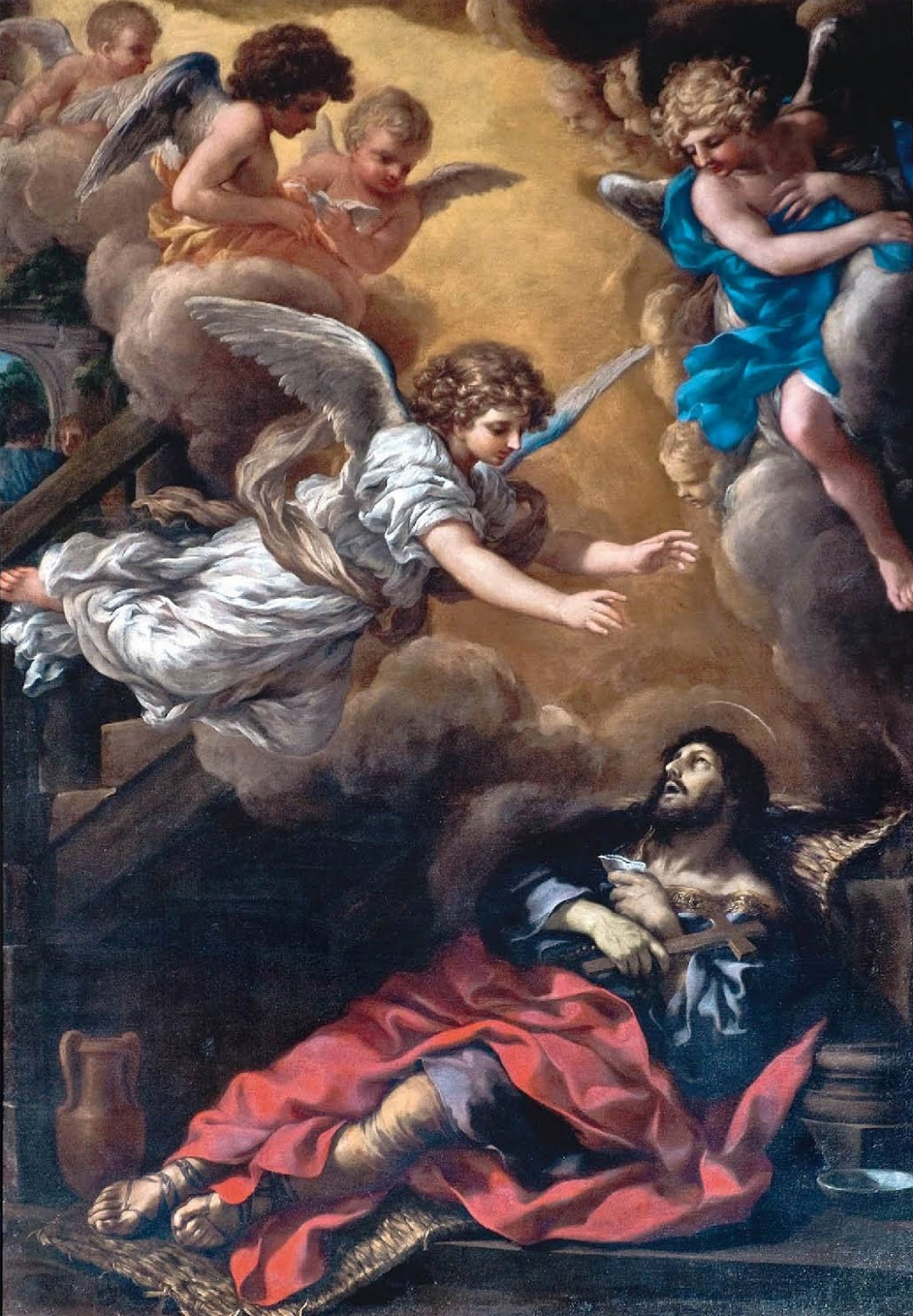The Death Of Saint Alexius on:
[Wikipedia]
[Google]
[Amazon]
 ''The Death of Saint Alexius'' or ''Saint Alexius Dying'' is an oil on canvas painting by
''The Death of Saint Alexius'' or ''Saint Alexius Dying'' is an oil on canvas painting by
 ''The Death of Saint Alexius'' or ''Saint Alexius Dying'' is an oil on canvas painting by
''The Death of Saint Alexius'' or ''Saint Alexius Dying'' is an oil on canvas painting by Pietro da Cortona
Pietro da Cortona (; 1 November 1596 or 159716 May 1669) was an Italian Baroque painter and architect. Along with his contemporaries and rivals Gian Lorenzo Bernini and Francesco Borromini, he was one of the key figures in the emergence of Roman ...
, created ''c.'' 1638. It is held in the Saint Alexis chapel in the Girolamini, Naples
The Church of the Girolamini (also spelled ''Gerolomini''), also known as the Church of Saint Philip Neri, is a church and ecclesiastical complex in Naples, Italy. It stands directly across from the Cathedral of Naples on Via Duomo. Its façade ...
. It shows the dying saint Alexius of Rome
Saint Alexius of Rome or Alexius of Edessa (, ''Alexios''), also Alexis, was a fourth-century Greeks, Greek monk who lived in anonymity and is known for his dedication to Christ. Two versions of his life exist, one in Syriac language, Syriac and ...
holding a letter welcomed by angels — he had left his family and returned to them at the moment of his death, with them only recognising him thanks to the letter.
History
It was commissioned byAnna Colonna
Anna Colonna (1601–1658) was an Italian nobility, Italian noblewoman of the Colonna family, Colonna and Barberini families. She was also the Princes of Paliano, Princess of Paliano.
Early life
Colonna was born in 1601 at Orsogna; the daughter ...
, wife of Taddeo Barberini
Taddeo Barberini (1603–1647) was an Italian nobleman of the House of Barberini who became Prince of Palestrina and Gonfalonier of the Church; commander of the Papal Army. He was a nephew of Pope Urban VIII and brother of Cardinals Francesc ...
, nephew of pope Urban VIII
Pope Urban VIII (; ; baptised 5 April 1568 – 29 July 1644), born Maffeo Vincenzo Barberini, was head of the Catholic Church and ruler of the Papal States from 6 August 1623 to his death, in July 1644. As pope, he expanded the papal terri ...
, and later given to the Oratorians An Oratorian is a member of one of the following religious orders:
* Oratory of Saint Philip Neri (Roman Catholic), who use the postnominal letters C.O.
* Oratory of Jesus (Roman Catholic)
* Oratory of the Good Shepherd (Anglican)
* Teologisk Orator ...
of Naples with other relics and precious objects. The Barberini family had a particular devotion to Alexius, so much so that the opening show at their Palazzo's theatre was a sacred drama on that saint's life written by Giulio Rospigliosi
Pope Clement IX (; ; 28 January 1600 – 9 December 1669), born Giulio Rospigliosi, was head of the Catholic Church and ruler of the Papal States from 20 June 1667 to his death in December 1669.
Giulio Rospigliosi was born into the noble Ro ...
with sets designed by da Cortona. Anna Colonna was deeply linked with the Oratorians' founder Philip Neri
Saint Philip Neri , born Filippo Romolo Neri, (22 July 151526 May 1595) was an Italian Catholic priest who founded the Congregation of the Oratory, a society of secular clergy dedicated to pastoral care and charitable work. He is sometimes refe ...
, owning a small bone of his in a reliquary by Alessandro Algardi
Alessandro Algardi (July 31, 1598 – June 10, 1654) was an Italian high-Baroque sculptor active almost exclusively in Rome. In the latter decades of his life, he was, along with Francesco Borromini and Pietro da Cortona, one of the major rivals ...
, which she later gave to the Oratory in Naples. Da Cortona was also highly devoted to the Barberini family and the Oratorians in Rome, painting frescoes at the gallery of their palazzo (1633—1639) and working on the sacristy
A sacristy, also known as a vestry or preparation room, is a room in Christianity, Christian churches for the keeping of vestments (such as the alb and chasuble) and other church furnishings, sacred vessels, and parish records.
The sacristy is us ...
of the Oratorians' chiesa Nuova in Rome, later returning to the latter in 1648—1665 to take part in decorating the church.
The painting was installed in Anna's private chapel and completed economically by the Oratorians with wooden and stucco decorations imitating marble. Mario Borrelli records a transcription of a contract for Francesco Solimena
Francesco Solimena (4 October 1657 – 3 April 1747) was a prolific Italian Baroque painter, one of an established family of painters and draughtsmen.
Biography
Francesco Solimena was born in Canale di Serino in the province of Avellino.
H ...
to decorate the chapel and produce paintings for it — that lacked the family coat of arms and the presence of very little furniture in it suggests that the contract was not concluded or that it was resolved by him and the Oratorians. Mario Borrelli in ''Contributo alla storia degli artefici minori e maggiori della mole Girolimiana'', Naples, 1968
References